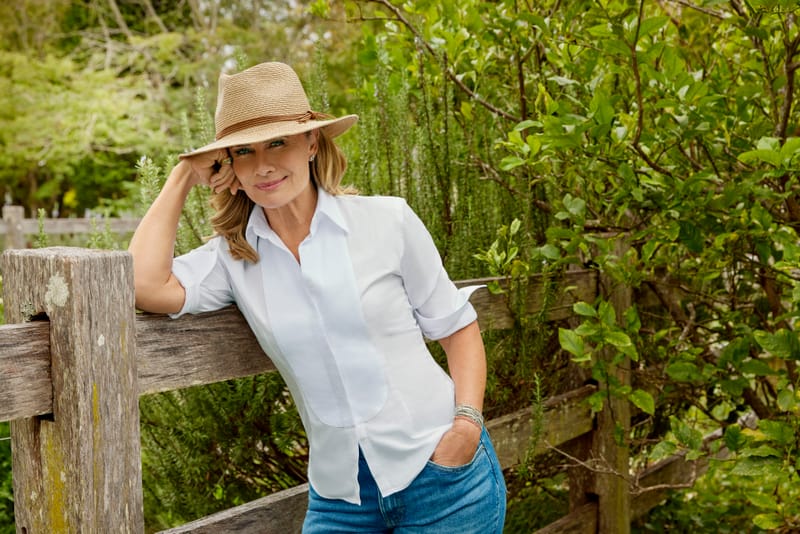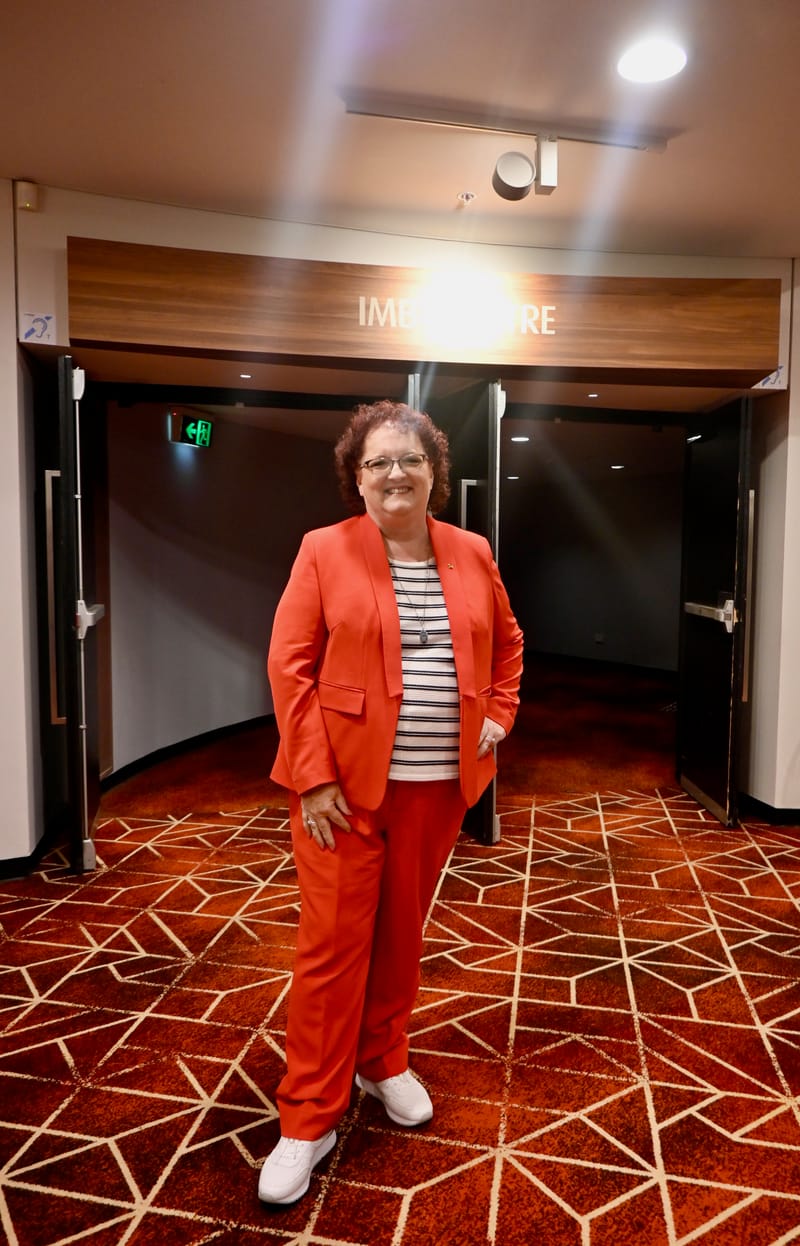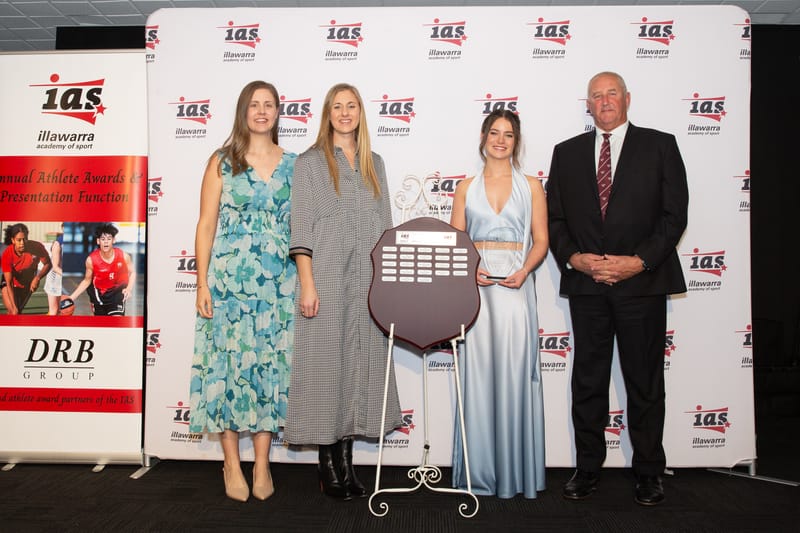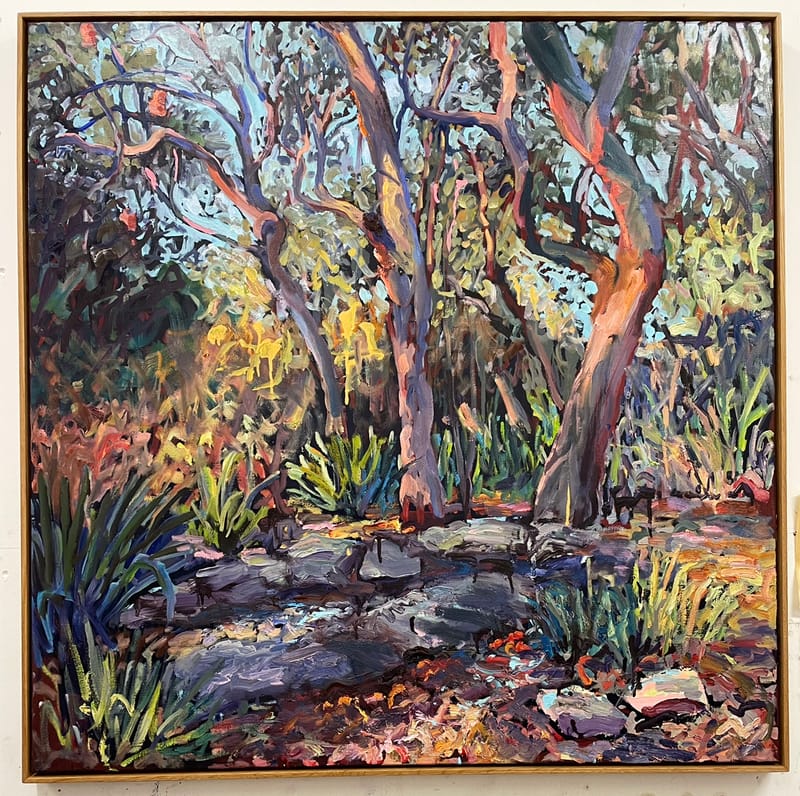Reframing the past
One show, three perspectives – a subject, a visitor and the gallery program director share their thoughts on the historic portraits of local life featured in SNAPPED! Street Photography in the Illawarra
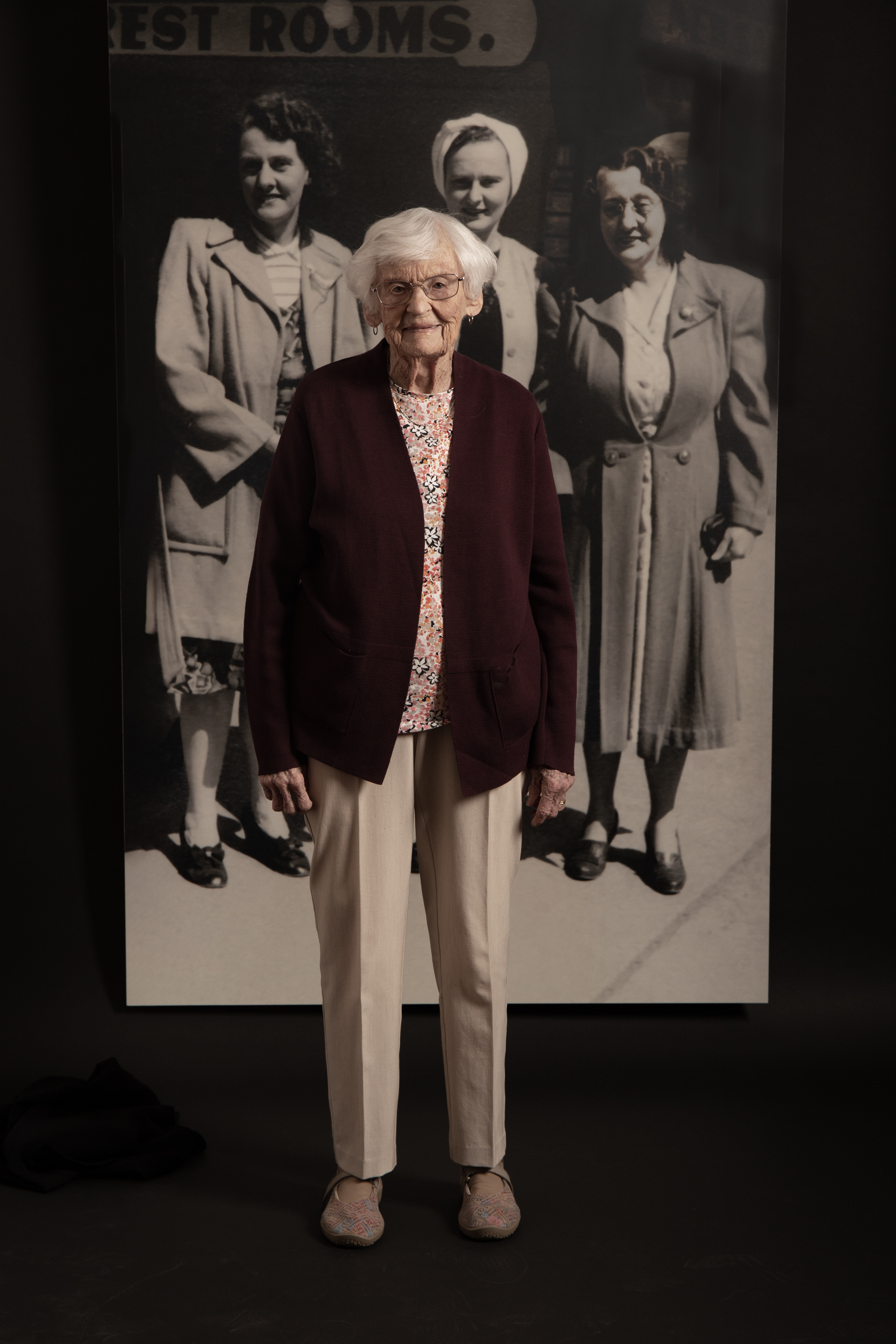
Points of View
One show, three perspectives – a subject, a visitor and the gallery program director share their thoughts on the historic portraits of local life featured in SNAPPED! Street Photography in the Illawarra
Undeterred by the Omicron outbreak, a steady stream of visitors has flowed through the Snapped! exhibition at Wollongong Art Gallery.
Beryl Meredith, 91, has been three times.
Beryl is a lifelong resident of Thirroul. She features in five of the black and white photographs by commercial street photographers working in the Illawarra from the 1930s to the 1960s.
“It is very interesting to see her as a teenager to her 20s and then as a married woman and middle aged,” said Wombarra’s Anne Zahalka, the photo-media artist behind the show.
This time last year, Anne wrote an article for 2515 Coast News, calling for community submissions, asking residents to check family photo albums for the postcard-sized images taken by roving street photographers.
“My aim is to bring this dispersed archive of local street photography to the public in a reconfigured form in order to consider the way the citizens of the Illawarra looked through a contemporary lens,” Anne wrote at the time.
Anne has not only met her goal in Snapped!, she’s taken it a step further. Since the show opened in December, Anne has begun photographing some of the subjects today, recording them against the backdrop of their original portraits.
In one ‘then and now’ shot, a 91-year-old Beryl Meredith stands before a picture of her 17-year-old self. She was snapped with her mother and aunt on Crown Street, back in the day when a shopping trip to Wollongong was a reason to dress up.
In a conversation recorded last month, Beryl and her daughter, Robyn Vella, kindly took time to share their memories of the way things were.
THE SUBJECT: Beryl Meredith
What did you think of the show?
Beryl Meredith: It was very good, actually.
Daughter Robyn Vella: We went once, just Mum and I; then we went once with my daughter, her husband and two children; and then on Sunday we went with my son and his children.
What was your favourite bit?
Beryl: Oh, I liked it all. It was really well done.
What did you think of the street photographers at the time? Were they welcome, or a bit of a nuisance?
Beryl: They were welcome. They were quite nice and very professional. They did that for a living. They’d come down from Sydney and take photos of people in the street – it was done quite regularly.
Robyn: Were people happy to be photographed?
Beryl: Oh, most people I think, yes. You’d always get the one that didn’t want to, but on the whole people thought, ‘Oh yeah. I’ll have a photo taken.’ You weren’t forced into buying them or anything.
Did you buy the photos?
Beryl: Yes. I’ve got a few.
Robyn: There’s five in the exhibition, actually. There’s one with my father, then one with my auntie, there’s one there with Mum and my grandmother, they’ve got a little boy with them and that was my grandmother’s brother’s little boy. He joined the regular army and went on to fight in Vietnam. Sadly he died of a brain tumour caused by Agent Orange, but he was quite old then.
Tell us about the photograph you’re pictured in front of.
Beryl: I was in a white frock, it had blue flowers on it, I think. I had like a turban, I had my hair in curlers, because we were going out that night.
Were you going somewhere special?
Beryl: Oh no, not really.
Robyn: You and Dad used to go to dances, didn’t you?
Beryl: We were going to the movies, I think. It would have been a Saturday.
Robyn: They used to do their hair, put their hair in curlers and go and do their shopping in the morning. And then in the night time …
Beryl: It was either the movies or you went dancing, that was about it.
What year was it taken?
Robyn: Mum was born in 1930 and we estimate that she was 17, because it was before she had me. It would’ve been 1947.
So just after the war – what were the fashions like then?
Beryl: As you see, we dressed up. Even to go to Wollongong to shop, you usually wore stockings, high heels, not gloves so much, but you usually dressed up – different to today, completely.
Robyn: Mum went to Smith’s Hill Girls High. And when the war came, you got out of wearing stockings, didn’t you?
Beryl: Oh yes. You used to have to wear black stockings, full uniform, including hat and gloves. In 1939 the war started, then they couldn’t have uniforms – you just wore what you could get. What my mother did was unpick my school uniform and make a skirt out of it. I wore it with a white blouse for a while. I got too big for it, and she passed it on to somebody else in the family. You had coupons – tea, milk, sugar and butter, and clothing – those were really the hardest things to get. It was hard. So you’d unpick things and redo them. Like cardigans and jumpers, you’d undo them all up, wash the wool and reuse them again. It was a case of ‘if you could do it, do it’.
Robyn: It was a lot different to today!
It puts our current shortages in perspective.
Robyn: Yes, it does. My grandchildren, when they went to the exhibition, they really were quite interested and asked mum lots of things.
They couldn’t get over how Mum didn’t have traffic lights and mum had to explain, well … there was no traffic.
Beryl: My great-grandson once asked me if we had to hunt for our own food. I said, ‘It wasn’t that bad!’
What memories did the exhibition bring up?
Beryl: A lot. It reminded me of a lot of old friends that have long gone, they’ve all gone, actually. It’s only me left. A lot of family I’ve lost down there, so it was quite emotional in lots of ways.
Have you always lived in Thirroul?
Robyn: Mum was born in Thirroul. The house she was born in, it’s still standing. We’ve shown all the grandkids and great-grandkids. Dad lived the other side of the railway.
Beryl: We met at a youth club.
Robyn: Mum and Dad met there and then they married and they lived all their life there.
She worked at Hardie rubber factory in Thirroul. When the war came, the girls got employed in the factories because there was a lack of men. But even then, once you were pregnant, you gave up work. It was frowned upon if you kept working and had children – whereas now, it’s totally reversed.
Before Covid, Mum was still swimming two laps of Thirroul pool, she’s always swam, always loved the beach.
Is that one of the secrets to a long life?
Robyn: Yes possibly. The heart specialist told her, whatever you’re doing, just keep doing it. We are four generations. [Beryl has two children – Robyn and son Darryl – four grandchildren and four great-grandchildren.]
So I think that’s also what’s keeping mum going, having the younger children around her.
Beryl: I’m still playing games with them. They’ve got a lot of patience with me [laughs].
What is the biggest change you’ve seen?
Beryl: Thirroul used to be a thriving little shopping town. You could shop there for everything, and Wollongong too. You go down to Shellharbour now to shop, and that’s a shame really.
I have seen a lot of changes. It used to be always people on the street and you knew everybody.
Robyn: Dad was a coal miner. And you’d sit on the front verandah and it was, ‘Oh, g’day mate, how you going?’ Everybody was friendly. We go down there [to Wollongong] now and Mum went into a shop and they said, ‘Where do you live?’ I said ‘Thirroul’. And they said, ‘Oh, you live in the Northern Suburbs’. And we both looked at each other and thought, ‘Well, Thirroul’s just where it always was.’ You know, we’re just normal people.
Beryl: It’s totally different, that’s life really. But to me, it’ll always be Thirroul.
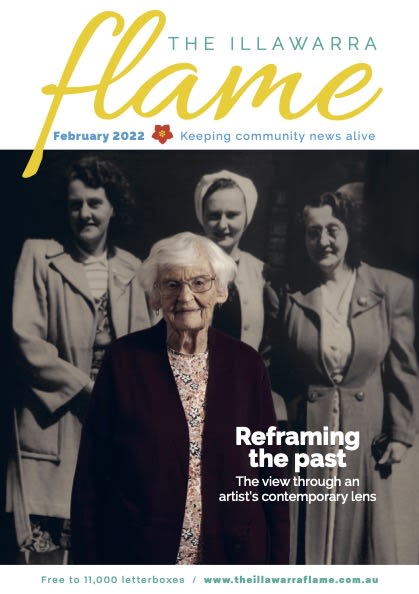
THE PROGRAM DIRECTOR:
Wollongong Art Gallery’s John Monteleone
Photography has become ubiquitous. Anyone with a phone can take and share images. However, this does not a photographer make.
Historically, photography was practised by comparatively few people. These photographers developed a new form of aesthetic and critical appreciation, with some of the most highly regarded taking to the streets to capture daily life. In this way, photographs captured a transient moment, offering an incomplete but palpable suggestion of the story behind the image, a record that lives beyond that moment.
Anne Zahalka, one of Australia’s most highly regarded photo-media artists, is a contemporary embodiment of these early photographers.
Inspired by images of her mother as a young woman on the streets of Europe, Anne’s street photography-based work re-examines and brings new insights into the candid moments of people doing everyday, mundane things.
In Snapped!, Anne brings new life to human action in the streets, recontextualising the concept of Henri Cartier-Bresson’s “decisive moment” by restaging these early scenes of people going about their business with their descendants today. Anne, assisted by artist Sam St John, undertook a long period of research and community engagement to access the images. Dressed in an evocative and enticing veneer of nostalgia, Snapped! is a deeply layered exhibition that prompts a profounder reflection on our forebears and invites the viewer to witness the city’s ever-changing nature and reframe the past with a contemporary lens.
THE VISITOR:
Local author Lyn Hughes
Snapped! left me with a surprisingly tender feeling and a lot of questions. Always a good sign.
Why do old black and white photographs so engage and entertain and move us? Why did an increasingly close perusal of these old “snaps” of unknown people in a Wollongong street, enlarged and brought to visceral life by Anne Zahalka, leave me wondering about people’s jaws? How they seem somehow more jutting and determined than our own. Their faces more stoic and long-suffering. And could it be that the passage and endurance of a World War or two could affect a person’s very stance and gaze?
I found these photographs, originally taken by commercial street photographers, deeply moving. Not just the young women confidently stepping out in their heels, or the young men jauntily parading in waist-hugging swimmers, but the children, with their knock-knees and hand-knitted cardigans and bashful or evasive or bravura eyes.
Any photography show that can make us care and want to know more about a stranger from the past is important – both to keep a record and to remember we are all of a universal lineage, determinedly going about our everyday lives. And if the omissions are so obvious as to seem glaring – where in these valuable records of our recent ancestors are our first peoples, our disadvantaged, our many varied ethnicities? – surely this, too, stands as a timely record and reminder of recent times.


